
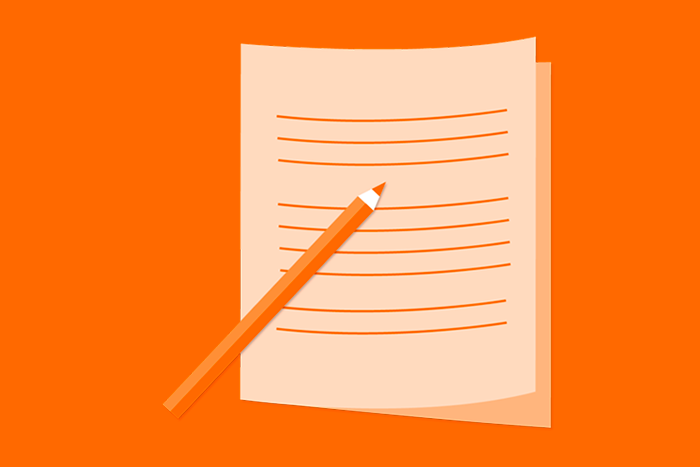
Viewpoints
Viewpoints is a blog in which different writers express their views and opinions on current topics. A new blog post is published about once every four weeks.
You can propose texts by e-mail to viestinta@kesko.fi. The maximum text length is 2,000 characters.
Pieta Jarva: The Baltic Sea benefits from nutrient measurement
K-maatalous Experimental Farm striding towards circular economy

The Baltic Sea, the Finns’ local sea, is a unique ecosystem that has been under an enormous burden for a long time already. Eutrophication resulting from nutrient inputs and internal stress coupled with the accumulation of hazardous substances in the sea are the key problems which the Baltic Sea Action Group foundation is trying to solve. Like so often, actions to solve these problems need to be taken at different levels of the society.
The BSAG’s Baltic Sea commitments provide businesses and public entities a channel for taking responsibility for improving the condition of the Baltic Sea. At the same time, there is also often a connection with climate work– when intertwined problems are solved, impact on one also has an impact on the other. The range of methods is also often the same.
Early this year, K-maatalous Experimental Farm made a Baltic Sea commitment with the purpose of developing soil condition, soil water and nutrient usage measurement practices and technology. The Experimental farm at Hauho is testing the suitability of new measurement technology for practical farming.
Effective measurement methods promote sustainable agriculture as cultivation investments can be optimised according to crop targets and use, soil potential and the requirements of plant varieties. Good soil condition and appropriate fertilization, as well as transforming nutrients to good crops are important profitability factors for farmers. Properly treated soil also sequesters carbon to soil and thus fights the climate change.
The reduction of nutrient leakages is obviously essential for marine welfare. It is achieved by preserving the cycling and utilisation of nutrients and by using them when necessary and in a sustainable manner.
A direction towards a society that recycles nutrients and uses them sensibly has already been taken from a wider perspective. Proof of which the targets set in the current Government Programme concerning the recovery of nutrients especially in areas sensitive for the Baltic Sea and water bodies, so that at least 50% of manure and urban waste water sludge are processed and recycled by 2025. At the EU level, the same can be seen in the circular economy package published early this year. The first action resulting from it is the amendment to the fertilizer regulation which opens the internal market to recycled nutrient products.
The creation of a systemic change like this towards a society that uses nutrients sustainably requires knowledge, examples and practical solutions, such as the new measurement methods and equipment now being tested at K-maatalous Experimental Farm. Step by step, or even stride by stride, in the right direction!
Pieta Jarva
Baltic Sea Action Group
Juha-Matti Mäkelä: Sustainably farmed fish is good also for health
The health benefits of eating fish are fairly well known among nutrition experts and consumers as well. Because of the high vitamin D content and fatty acid composition, it is recommended that we eat fish at least twice a week.
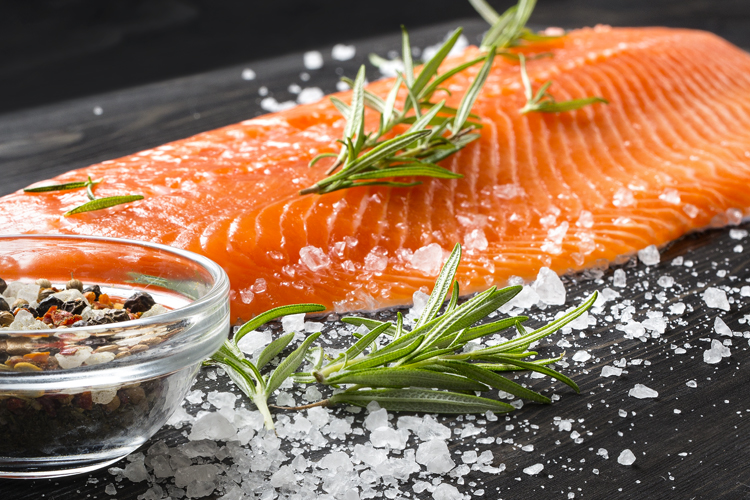
Globally, fish plays a significant part in the food supply of people. Fish is the main source of protein for approximately one billion people. Cultivated land is already being farmed intensively and the fish resources have become scarce in respect of many species and seas. There is, however, room for the fast growing aquaculture, as long as we take care that the growth is sustainable and respects the environment.
The development of Finnish fish feeds has long invested in intensifying the utilisation of fish feed nutrients and the reduction of nutrient inputs into water bodies. The most recent development step was taken in summer 2016, as Raisioaqua, part of Raisio Group, began manufacturing the Baltic Blend feed based on nutrient cycling in the Baltic Sea. Thanks to the Baltic Blend feed, we now produce food for the first time in a fairly nutrient neutral manner.
Environmental factors also increasingly guide consumer choices at food stores. Benella Rainbow Trout, farmed by Finnish contract producers, is a newcomer at the K-citymarket and K-supermarket fish counters and has become popular among consumers who appreciate freshness and quality and want to make responsible choices. The owner of the brand is Raisioaqua, who makes it available to fish farmers committed to using Raisio’s responsible feeding concept and feeds.
Benella is good for health. Finnish rainbow trout is a particularly good source of vitamin D. Thanks to an effective feeding concept and feeds developed for the northern conditions of Finland, Benella’s omega-3 fatty acids, EPA and DHA, are at the right level. That’s why Benella Rainbow has been granted the Heart Symbol that stands for a healthier food choice.
Benella is good also for the environment. The Finnish fishmeal and fish oil used in the Baltic Blend feeds are manufactured of the Baltic Sea herring and sprat whose stocks are at a sustainable level. Recycling of nutrients reduces the phosphorus load of water bodies and the condition of the Baltic Sea is improved by every Benella fish. In addition, the fish oil in the feed of the Benella Rainbow Trouts is partly replaced by rape oil. This helps save the dwindling fish resources in oceans.
The rainbow trout farmed in Finland has been included in WWF Finland’s Seafood Guide’s green list, proof of the work done for the benefit of the environment by the Finnish fish farming industry. The fish farming sector has done exemplary work in protecting our common Baltic Sea. Therefore Finnish Benella Rainbow Trout, guaranteed to be fresh and tasty, is a good choice.
Juha-Matti Mäkelä
Marketing Manager
Raisioaqua / Raisioagro Oy
Anni Ronkainen: Feeling digital? - Digitisation here and now
An increasing number of traditional businesses are taking significant steps on the path towards digitisation. What does digitisation actually mean? Why is it perhaps one of the greatest transitions fuelled by technology in the history of mankind?

There is no single definition of digitisation, but in general, it is used to refer to digital renewal – anything that can be digitized is digitized and integrated in our daily lives. Over the years, consumers have seized the opportunities enabled by technology, whereas businesses have a lot to catch up.
Digitisation has an overall impact on the operations of businesses and their existing structures. It challenges the current earning logic and the traditional operating models.
Digitisation concerns all sizes of businesses in all lines of business and businesses have only two alternatives in responding to this change: either they seize the opportunities enabled by digitization and build it into a competitive advantage, or they don’t and lose the competition.
Digitisation is not, however, a mere exercise in technology. Technology enables the change, but the change itself arises from somewhere else altogether, namely from us people. But the interesting thing is how we embrace new technology and make it part of our daily lives.
Digitisation concerns us all. It has irrevocably changed our behaviour at both work and leisure. New technology and digital services have permanently changed the way we are, live and consume.
Digitisation has a strong impact on business culture. It does away with hierarchical barriers and adds transparency and openness to the organization. Digitisation forces businesses to decentralise decision-making and authorises teams to assume ownership. A successful organisation responds quickly, tries out new things and is not afraid of making mistakes.
The digital transformation does not happen by itself, it needs active management. Above all, management is about managing change at all levels of the organisation. It means building new skills, demolishing rigid silo-like structures and increasing cooperation an all levels. Enabling fast response and action is the lifeblood of an organisation.
We have the privilege of witnessing this big transition – witnessing how technology changes the world and improves the quality of life for even billions of people. No similar transition will take place during our lifetimes. The work we do in the K-Group influences the daily lives of all Finnish people. That keeps our attitude humble.
Anni Ronkainen, Chief Digital Officer, SVP, Kesko
Tiina Pessi: The recycled plastic bag is a responsible choice
Sustainable development is one of today's rising trends that is frequently spoken about.
Sustainable development is one of the four values we have at Amerplast: Sustainable development, Cooperation, Commitment and Initiative. We emphasise sustainable development in all our operations; we use less, we reuse, and we recycle.
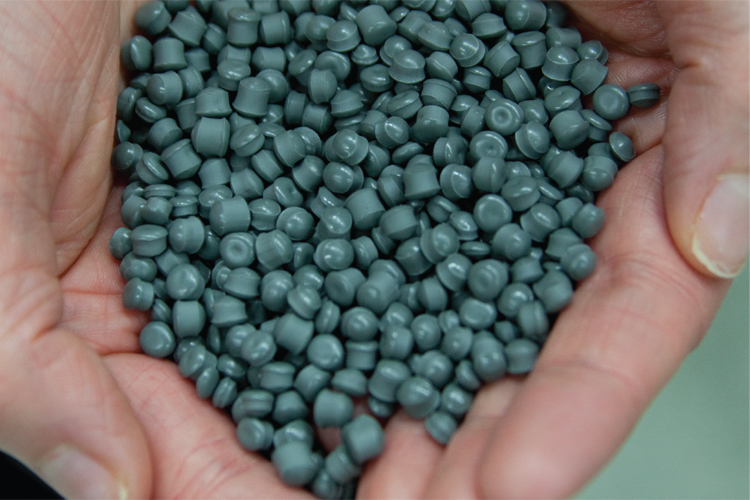
It is an important part of this activity to offer packaging solutions that are sustainable in terms of the environment. We feel strongly about recycled materials, reducing carbon dioxide emissions and cutting food waste.
Cutting food waste is critical to saving important resources and reduce methane emissions. Food waste is one of the biggest global challenges we face today. One way we have tackled it is by bringing to the market a packaging solution that extends the shelf life of fresh foods.
Amerplast has been developing recycled plastic use ever since the 1990s. Today, we produce bags that contain even more than 90 % recycled material. We have also developed products in cooperation with our customers.
A good example of this is the K-Group's Pirkka recycled plastic bag that is more than 90 % recycled material. 30 % of the raw material comes from protective plastic wrappings used in transporting goods sold in K-food stores. Pirkka recycled plastic bags entered the market in August 2010.
In our development, we have had a strong faith in recycled materials and putting them to good use. The starting point of our development work has been that the properties of the bag must be as good as before.
Our faith in recycled material has been further increased by the Optikassi study by the Finnish Environment Institute and Lappeenranta University of Technology indicating that a shopping bag made of recycled material is the best option. Also the Ecoflexobag project by VTT Technical Research Centre of Finland showed us that increasing the percentage of recycled material further decreases a bag's carbon dioxide emissions.
In April 2016, Amerplast signed an agreement with Ekokem about plastic raw material delivery. This helps us produce ecologically more sustainable and more environment-friendly packaging solutions. According to the agreement, Ekokem's plastic refinery that will start operation during the summer of 2016 will provide Amerplast material for plastic bags. The majority of the raw material in Ekokem's plastic refinery comes from consumer waste that is collected in plastic package collection points all over Finland.
In early December 2015, the European Commission published a new Circular Economy Package with the objective of promoting transition to circular economy in Europe. So, work with recycled materials continues at Amerplast, and we have plenty of possibilities there.
Tiina Pessi, Business Director, Retail
Amerplast Ltd.
Mari Laiho: Even the children of poor families have the right to education
Even though education in upper secondary schools and vocational schools is free of charge in Finland, it is by no means free of cost. A student in upper secondary school needs a calculator, a computer and a big pile of books. Taking the graduation exams costs as well. In vocational schools, you also need any industry-specific tools and equipment, such as chef knives, barber's equipment, protective clothing, work shoes and other material. The cost of indispensable purchases easily go up to €2,500.
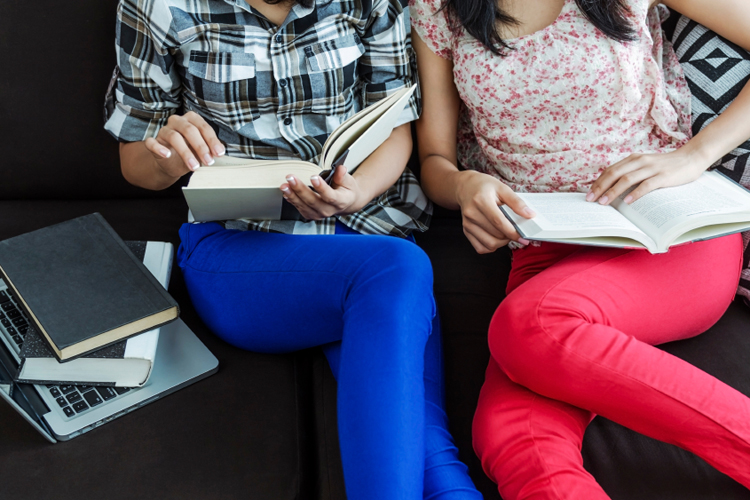
For many low-wage single parents – and for families with unemployment, incapacity to work, illness, debt, bankruptcy, temporary layoffs, changing situations and related costs, or many children – that is too much.
However, there are not many options. Starting to work as a minor with no education on top of the compulsory education is not how things are done today. There would probably not even be work available. Then again, there will be no unemployment security, either, if the youngster does not actively apply for further education. That is, for the education that the family cannot afford.
Social exclusion results in unreasonable costs both to the individual and to society. Direct and indirect costs that multiply and extend over generations. The costs are realised both as direct expenses and as lost income.
Investing in children is a matter of human rights for the children, but the effects of the investment benefit all of us. Even the children of a poor family must be secured a truly equal opportunity to educate themselves. It is a matter of value judgement, but also of common sense.
“I have now completed my upper secondary school, and I cannot thank you enough for your support. Without you, I would not have been able to finish school, because I would not have had enough money to buy all the expensive books. Fortunately, you helped me and now I am heading for the graduation ceremony. I will continue studying to become a class teacher, specialising in teaching music. Let's keep fingers crossed that I am admitted. Once again, a big thank you for your help!”
This was the letter of thanks from a boy who received financial support for school material from a local chapter of Save the Children Finland.
The Eväitä elämälle (Fuel for life) programme of Save the Children aims to prevent social exclusion among children and youngsters. The local chapters of Save the Children taking part in the programme support the education and hobbies of children and youngsters in danger of social exclusion. Now you can support the work against social exclusion in a new way. Use your return bottle deposit to buy a lottery ticket. Press the Arvonta (Lottery) button on the bottle return machine in your local food store.
Mari Laiho is the head of citizen activity in Save the Children Finland.
Petri Salermo: Kesko for circular economy
There is a lot of talk about a circular economy today. As such, the concept is about old inventions, such as maintenance, leasing, repair business, reuse and recycling. An interesting opportunity arises when this is combined with the digital approach and new business models which break down the barriers of traditional ones.
In its simplest form, a circular economy means to consumers that products are retained in use as long as possible by either repairing or recycling them to new owners or used as raw materials of new products. We don’t need to own everything ─ goods can also be borrowed or rented.
The circular economy also brings about changes in the grocery trade at least in two different ways. The first one is the traditional viewpoint, that is, the rules and regulations which place new obligations in the trading sector, too. Obligations concerning the recycling of materials are becoming stricter, while the requirements for transparency in reporting also increase. Kesko is in an excellent position because we have, together, achieved fine results in materials recycling and the development work will continue.
Another change brought about by the circular economy is closely linked to consumer behaviour: Consumers want more and faster than before. Brick and mortar stores are becoming meeting spots where people can handle as many things as possible at the same time. It is here that the trading sector should combine the opportunities provided by the circular economy with other business activities.
Could we think that the store will also become a meeting spot for different material flows? Could we use the same logic of reverse logistics that we have successfully used for years in Kesko’s operations, for example in the collection and utilisation of packaging plastic? That is, could consumers return their discarded materials to the store when they come to buy something new, based on the concept of ‘bring in with you, take out with you’? 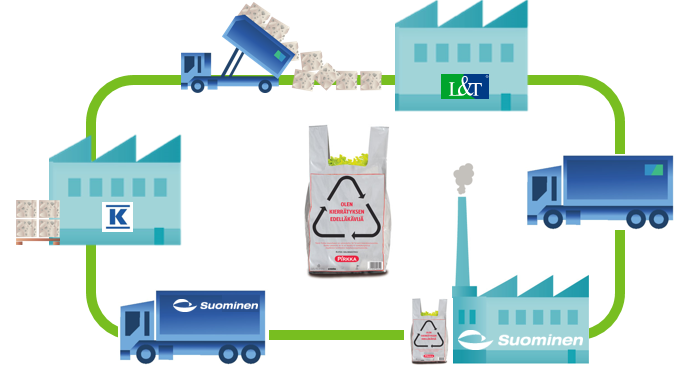
An example of efficient reverse logistics: Pirkka recycled plastic bags, made of Keslog’s leftover packaging plastic.
Another success story that we could learn about is Palpa’s deposit refund system, which is beyond compare even on a global scale. A money deposit could act as a good motivator in recycling of other materials too or maybe consumers could get a discount against the deposit when buying a new corresponding product?
The circular economy could benefit all parties: generate more activity to brick and mortar stores, improve services provided to consumers, and make all this in the way that is economical for the store and sustainable for the environment. I think we should not be just waiting for these changes to take place but get down to business right away. Kesko has done extremely good work for the circular economy for many years. Now it would be a favourable time to duplicate these ideas at the consumer interface.
Why do I believe that these ideas could really work? Because Finnish consumers are looking for new circular economy innovations. According to the survey conducted for us, there is demand for new services as long as they are easy enough to use and linked to our everyday lives.
Petri Salermo
Vice President, Environmental Services
Lassila&Tikanoja plc
The high profile of the Finnish sustainable development policy and its long continuation are appreciated around the world. The latest innovation with extensive social commitment, the Society’s Commitment to Sustainable Development, has received acknowledgement and aroused interest. In fact in January, Finland was rated number one in environmental performance precisely thanks to the Society’s Commitment.
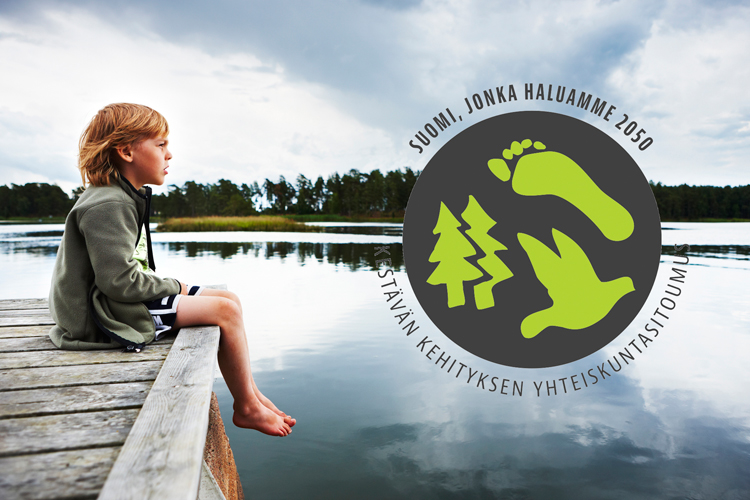
The goal of the Society’s Commitment to Sustainable Development is a Finland that thrives within the limits of nature’s capacity. It is both Finland’s national policy statement on sustainable development and a functional tool for concretising sustainable development. The Commitment has been created by the Finnish National Commission on Sustainable Development, chaired by Prime Minister Juha Sipilä.
The eight objectives of the Commitment address sustainable development from the point of view of promoting the wellbeing of people and the environment, healthy and sustainable economy and sustainable lifestyles. Different parties make their concrete operational commitments that are monitored and that create something new for them while promoting the achievement of one or more Commitment objectives. So far, more than 200 companies, organisations, government agencies, educational institutions and private persons have made public operational commitments.
Why should you join? The Society’s Commitment to Sustainable Development is a tool for change making. It provides an opportunity to set own objectives and promote their achievement under a common national umbrella. It is also a communication tool. Which sustainable development initiatives or actions would your organisation want to communicate to shareholders, customers and other stakeholders? Many Commitment participants have experienced that they have strengthened their reputation and built new national or international networks. The best thing is that an operational commitment truly promotes the adoption of sustainability in everyday practices.
Marja Innanen is the Deputy Secretary General of the Finnish National Commission on Sustainable Development (FNCSD).
See the commitments made by the K-Group and others at https://sitoumus2050.fi/
Nina Elomaa: Work with cocoa farmers
In discussions related to the responsibility of cocoa, the question that often comes up is why matters do not proceed at the expected pace despite all the effort. During the past years, the entire cocoa sector has invested hundreds of millions of euros in improving the corporate responsibility of the value chain, but child labour, farmers’ low income level, lack of education and many other challenges are still emerging.

Why do the matters not proceed at the desired pace? Are we doing wrong things or things in a wrong way? Or are we aiming at something that is not done easily? I believe that the latter is the case: the challenges are extensive and development takes time, but setting objectives high is important.
Without the objective, we at Fazer would hardly be where we are now. In 2010, we set ourselves the objective that in 2017 all the cocoa ingredient we use will be traceable and meet the criteria of responsible production. We exceeded the objective of 70% we had set for 2015 and this year our objective is that as much as 85% of the cocoa ingredient we use will meet the criteria.
Cocoa is cultivated on small farms near the equator. The estimated number of farmers is 5-6 million. In order to ensure that the living conditions and the living standard of people who get their livelihood from cultivating cocoa will improve, we have to bear responsibility of including also those farmers who are in the weakest position and not included in the certification systems. This is why we support cocoa farmers in Nigeria and Ecuador through direct responsibility programmes in addition to purchasing certified ingredient. Programmes in the countries of origin are implemented in cooperation with our ingredient suppliers. Together, we have created a procedure that genuinely seems to generate results in farmer communities. Thanks to our joint work, some of the farmers are, for instance, now included in the certification systems.
I consider it necessary that now and in the future we have an open and critical approach to what we are doing across the entire sector and keep well in mind that in the responsibility work the focus must be on the farmers. The future will depend on how the large number of small farmers currently not included in the certification systems can improve their standard of living thanks to better harvests and higher prices while also taking account of the cultivation methods that are sustainable for the environment.
I hope that all chocolate lovers have confidence in us and the work we are doing. We do our utmost to exceed the expectations of our stakeholders also in the future.
Nina Elomaa, Corporate Responsibility Director, Fazer Group